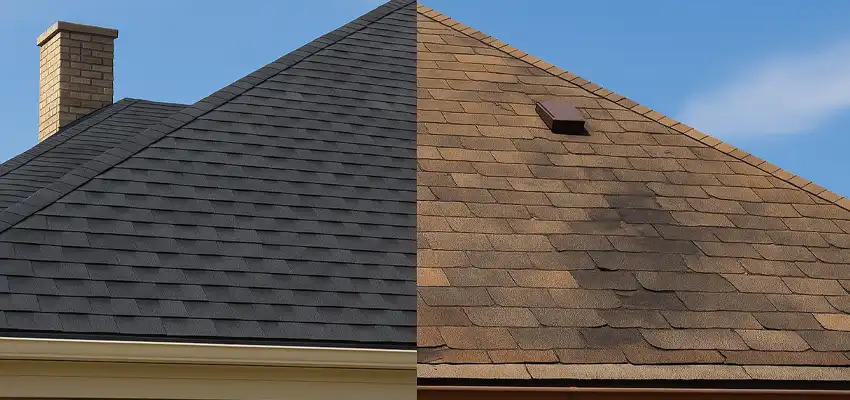When your roof starts to show signs of wear or has experienced damage, you may wonder if you should replace the entire roof, or if you could get by with a partial retrofit? The option you choose will depend on factors such as age of the roof, extent of the damage, your budget, and more. Here’s a look at the top differences between full roof replacement in Needham and partial retrofitting, and which one may make the most sense for you.
Full Roof Replacement: Defined
With a full roof replacement, all existing roofing materials—shingles, underlayment, flashing, and sometimes even the decking—are completely removed. Then, a brand-new roofing system is installed from the deck up.
Why do a full replacement:
- Comprehensive solution: All issues are addressed, including hidden problems like rot, poor ventilation, or structural damage.
- Longer lifespan: A new roof has a longer warranty and lasts 20–50 years, depending on the material.
- Better energy efficiency: Modern materials and updated insulation can boost thermal performance.
- Increased home value: A new roof is desired by potential buyers and could snag you the asking price you want, or higher.
- Uniform appearance: A full replacement avoids mismatched shingles or visible patchwork.
Roof replacement is best for:
- Roofs nearing the end of their lifespan.
- Widespread damage or multiple active leaks.
- When you are preparing to sell your home.
- Roofing systems with underlying structural or ventilation issues.
Partial Retrofitting: Defined
Partial retrofitting involves the replacement only of the damaged areas of the roof while leaving the rest intact. It’s a good option for when the damage is localized, such as after a fallen branch has punctured the material, or after a major storm.
Why do partial retrofitting:
- Lower upfront cost: You only have to pay for the materials and labor needed for the affected section.
- Less disruption: Repairs are faster and less invasive than a full replacement.
Partial roofing is best for:
- Tight budgets needing temporary fixes before a full replacement.
- Roofs under 10–15 years old with isolated damage.
- Storm-related impacts to one section.
Key Considerations
From age to extent of damage, there are many things to consider when weighing the two options.
- Age: If your roof is more than 20 years old, a patch job would only be a temporary fix. A full replacement is a smarter long-term investment.
- Extent of Damage: Widespread leaks, sagging, curling shingles, or moss growth across multiple sections are signs of systemic problems rather than surface wear.
- Material: It’s easier to repair some materials, such as metal or tile, in sections without noticeable mismatches. Asphalt shingles are harder to match in color and texture over time.
- Aesthetics: Partial repairs result in visual inconsistencies. Full replacement is the cleaner solution if you’re concerned about curb appeal.
- Cost vs Value: Retrofitting costs less up front, but it doesn’t last as long, requiring costly repairs over time. A full replacement comes at a higher cost but it lasts longer, poses fewer headaches, and offers better warranties.
Choosing between a full roof replacement and a partial retrofit isn’t easy, but it’s necessary to weigh the above factors to make the best decision possible. It’s best to start off with a professional roof inspection in Hanson MA to assess whether your home needs a full replacement or if a repair will do for now.
Contact Revered Metal Roofing
Not sure which option is best for you? Contact us at 781-536-4589 for a free consultation and quote on a roof inspection in Needham, MA.
We serve the entire South Shore and lower Cape with quality metal roofing products; standing seam, metal shingle and metal panel roofs in Hanson, Taunton, Marshfield, Quincy, Needham, Medfield, Milton, Halifax, Hanover, Falmouth and Plymouth.
Paul was easy going and a pleasure to deal with. No pressure. Crew got started late but the metal roof with new sky lights over our sun room was done in a day! Quality work. I recommend Revered Metal Roofing.

